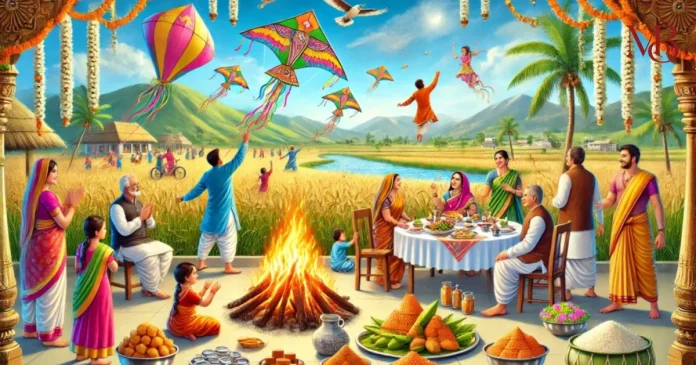Makar Sankranti Outside India: Makar Sankranti is a festival of joy, gratitude, and hope. Celebrated across India, it marks the sun’s transition into Capricorn (Makara), symbolizing the start of longer days and a new harvest season. But did you know this festival has connections to global traditions and is evolving with modern times? Let’s explore how Makar Sankranti goes beyond borders and how people celebrate it in new and exciting ways.
What Makes Makar Sankranti Unique?
Makar Sankranti is celebrated on a fixed date, January 14th (sometimes January 15th). It follows the solar calendar, unlike other Indian festivals tied to the lunar calendar. The festival signifies Uttarayan, the sun’s northward journey, symbolizing light, positivity, and growth. Makar Sankranti Outside India

Makar Sankranti Outside India
Makar Sankranti Outside India. Though Makar Sankranti is deeply rooted in Indian traditions, its essence resonates with festivals worldwide. Here are some similar celebrations:
1. Thanksgiving (USA)
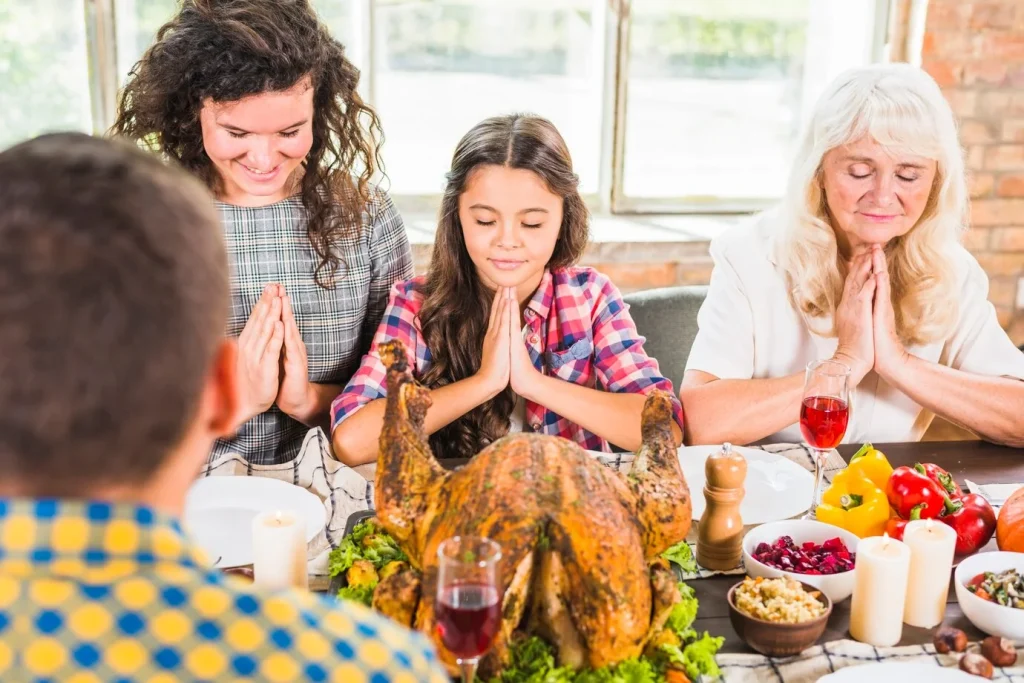
Both festivals express gratitude for a bountiful harvest. While Makar Sankranti involves tilgul sweets and kite flying, Thanksgiving celebrates with family feasts.
2. Harvest Moon Festival (China)
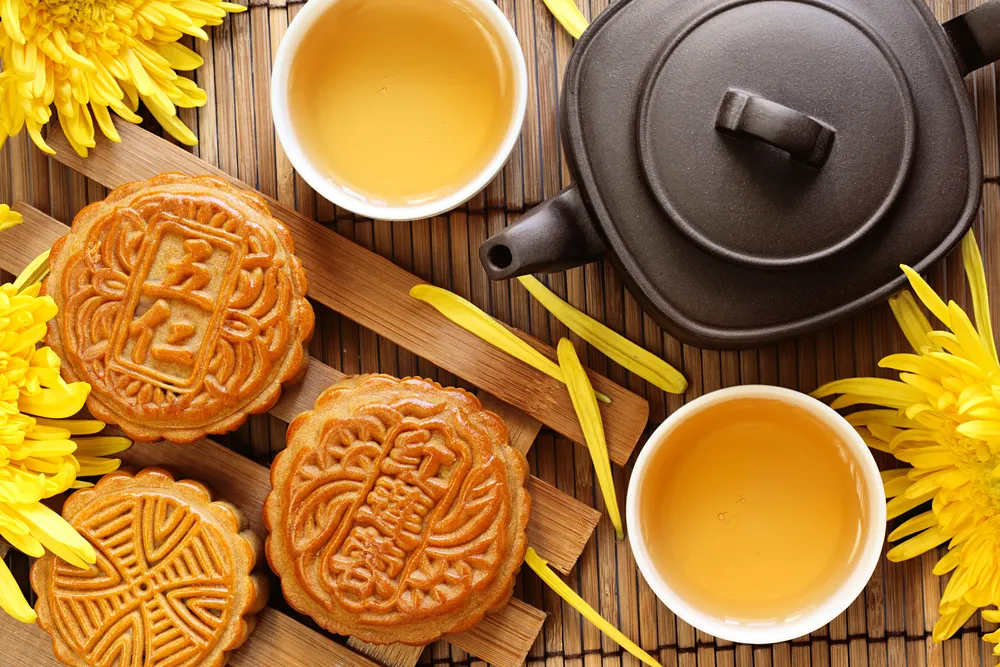
This Chinese festival celebrates the autumn harvest with family gatherings, mooncakes, and lantern displays. Like Makar Sankranti, it focuses on nature’s blessings.
3. Summer Solstice Celebrations (Scandinavia)
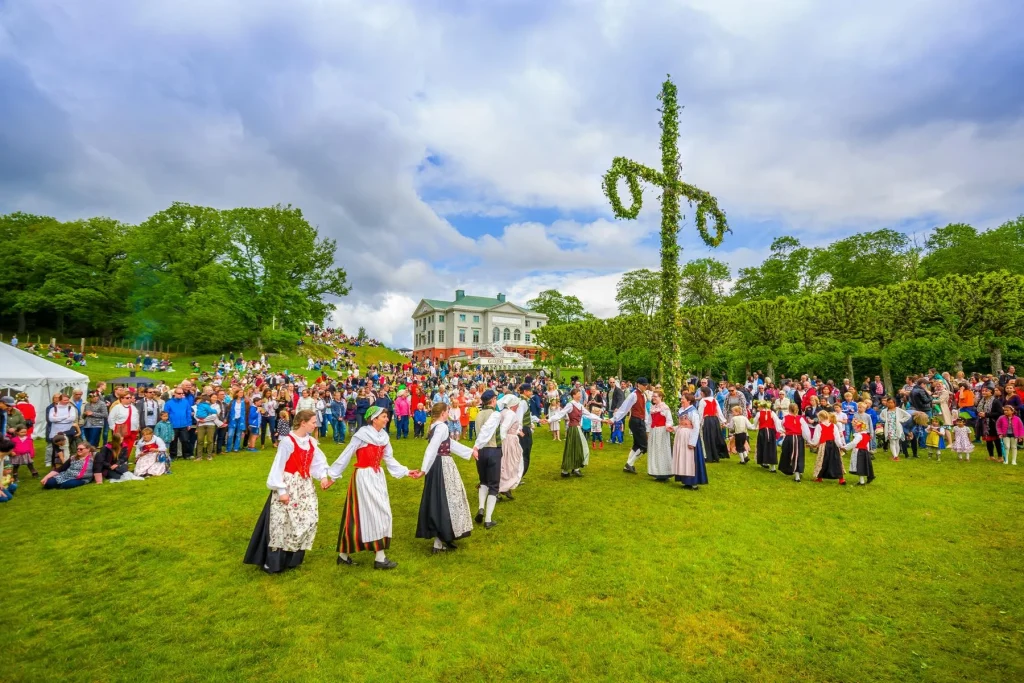
Scandinavian countries honor the sun’s role in agriculture. Bonfires, music, and feasts are common, mirroring Makar Sankranti’s spirit.
4. Maslenitsa (Russia)

Makar Sankranti Outside India, this festival marks the end of winter and the arrival of spring. Like Makar Sankranti, it includes delicious food, community activities, and a cheerful atmosphere.
Modern Trends in Makar Sankranti Celebrations
As times change, so do traditions. Here are some modern ways people celebrate Makar Sankranti:
1. Eco-Friendly Kite Flying
Kite flying is synonymous with Makar Sankranti. However, harmful synthetic threads (manja) have endangered birds and caused accidents. Now, people opt for biodegradable kites and threads. Communities organize bird rescue campaigns during this season.
2. Virtual Celebrations
Technology has brought families closer. Virtual kite-flying competitions and online cultural programs are gaining popularity, especially among NRIs who miss the festivities in India.
3. Sustainable Decorations
Instead of chemical-based rangoli colors, people use natural dyes. Recyclable materials are replacing single-use plastics in decorations.
4. Blended Celebrations Abroad
Indians living abroad celebrate Makar Sankranti by blending Indian traditions with local cultures. For instance, in the US, families organize potluck dinners featuring tilgul sweets alongside international cuisines.
Regional Flavors of Makar Sankranti
Makar Sankranti is celebrated differently across India, showcasing the country’s cultural diversity. Each state adds its unique flavor and traditions to the festival. This variety reflects the richness of Indian heritage and provides a glimpse into how communities connect with their roots while expressing gratitude for nature’s abundance.
1. Uttarayan (Gujarat)
Known for its kite-flying competitions, Gujarat’s skies turn vibrant. Special dishes like undhiyu and jalebi add flavor to the celebrations.
2. Pongal (Tamil Nadu)
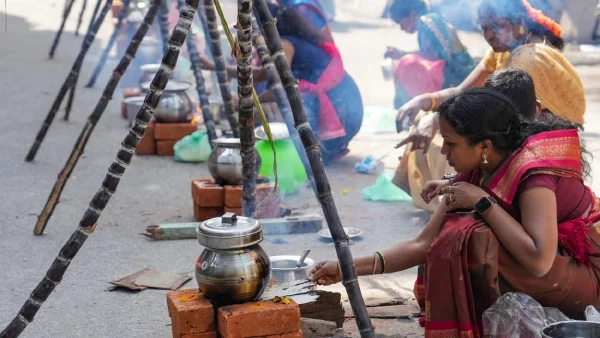
Pongal is a four-day festival coinciding with Makar Sankranti. Sweet Pongal, made with rice, jaggery, and ghee, is a highlight.
3. Lohri (Punjab)
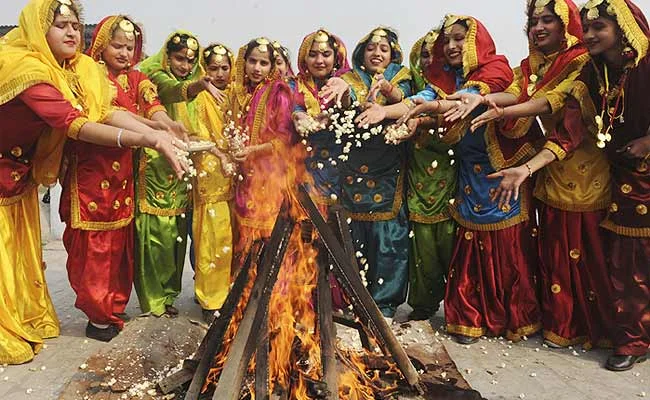
Lohri, celebrated on the eve of Makar Sankranti, involves bonfires, singing, and dancing. Families distribute sesame seeds, jaggery, and peanuts.
4. Magh Bihu (Assam)
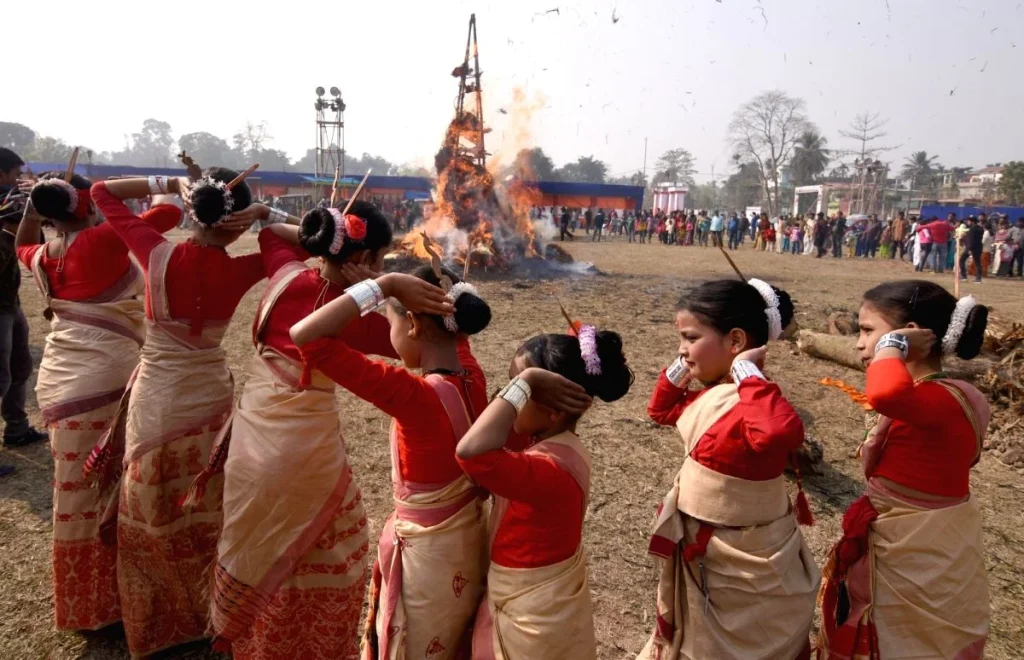
In Assam, people light bonfires and prepare feasts. Traditional Assamese dishes like pitha and laru are must-haves.
5. Khichdi (Uttar Pradesh and Bihar)
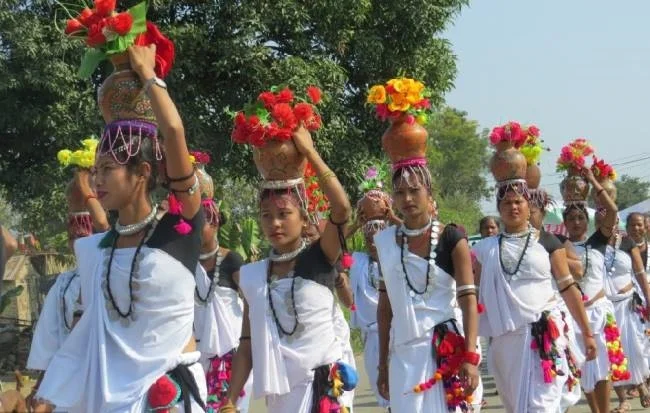
In northern India, people prepare khichdi (a mix of rice and lentils) and donate it along with blankets to the needy.
6. Poush Sankranti (West Bengal)
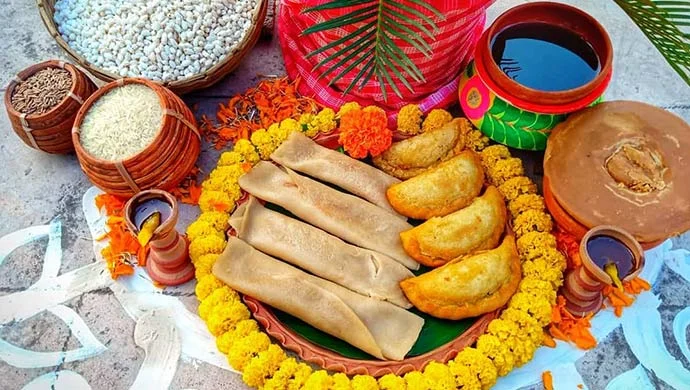
In West Bengal, the festival is known as Poush Sankranti. People make pithe-puli, payesh, and other delicacies using jaggery and coconut.
7. Suggi Habba (Karnataka)
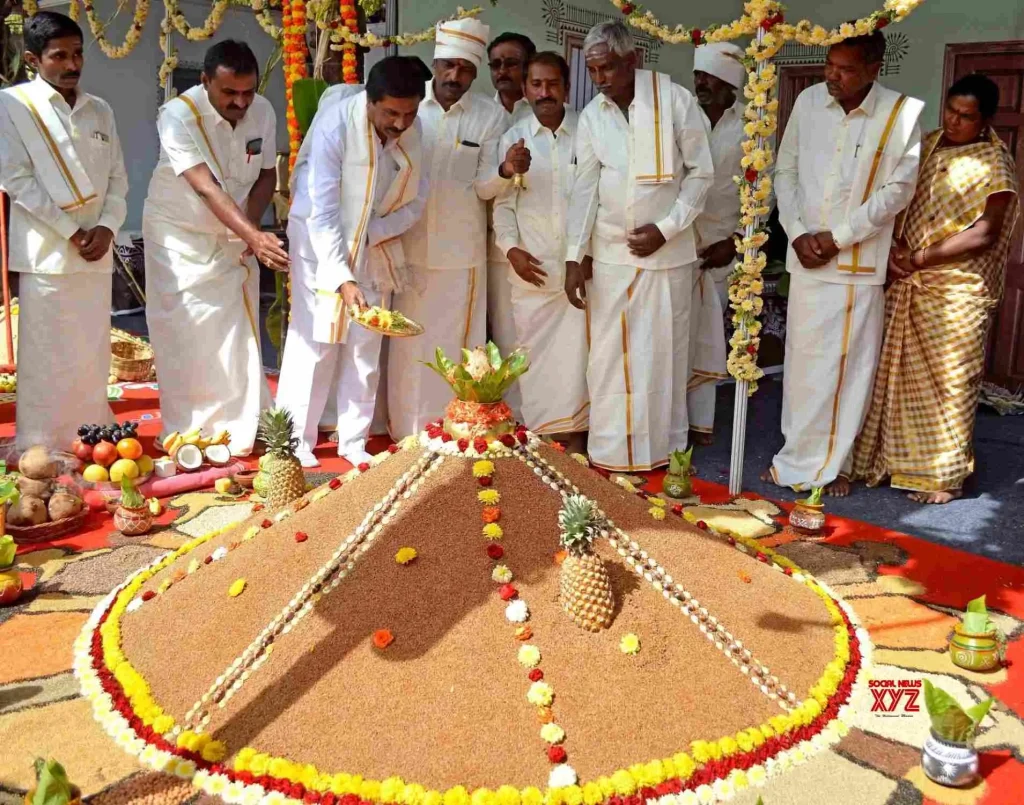
Karnataka celebrates Suggi Habba, a harvest festival where farmers honor the sun god and cattle. Traditional dishes like ellu bella are prepared.
8. Sankranti (Andhra Pradesh and Telangana)
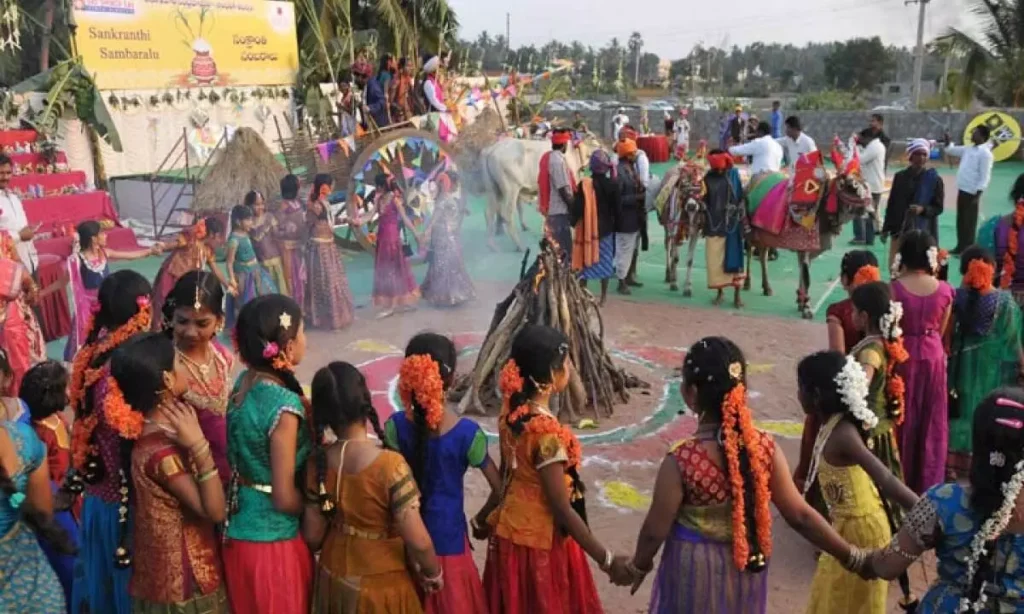
This four-day festival includes Bhogi, Makara Sankranti, Kanuma, and Mukkanuma. Kite flying and community feasts are highlights.
9. Thai Pongal (Kerala)

Though similar to Tamil Nadu’s Pongal, Kerala adds its distinct rituals, including elaborate feasts and community prayers.
10. Shishur Saenkraat (Jammu and Kashmir)
In Jammu and Kashmir, the festival is known as Shishur Saenkraat. Families celebrate with special prayers and traditional dishes.
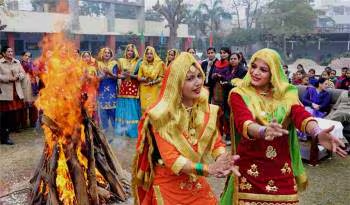
The Sustainability Factor
Makar Sankranti’s modern celebrations are increasingly focusing on sustainability. Here’s how you can make a difference:
1. Use Eco-Friendly Kites: Biodegradable kites and natural threads protect birds and reduce waste.
2. Donate Thoughtfully: Instead of lavish feasts, donate food, clothes, or money to those in need.
3. Avoid Fireworks: Celebrate with music and lights instead of crackers, reducing pollution.
4. Support Local Farmers: Buy organic and locally produced sesame seeds, jaggery, and other ingredients for festive dishes.
Makar Sankranti Outside India and Why Makar Sankranti Matters Today
Makar Sankranti is more than a festival; it’s a celebration of hope, community, and cultural unity. In today’s fast-paced world, where connection and gratitude often take a backseat, it serves as a vital reminder to slow down and appreciate the simple things. It encourages us to stay connected with nature, fostering an awareness of our place within the natural world. Moreover, it promotes a sense of gratitude, reminding us to appreciate the abundance in our lives. Finally, Makar Sankranti transcends differences, emphasizing unity and shared humanity despite cultural or social diversity. It’s a celebration that holds both cultural and spiritual significance, reminding us of values that are essential for a fulfilling life. In today’s fast-paced world, it reminds us to:
- Stay connected with nature.
- Express gratitude.
- Embrace unity despite differences.
If you liked “Makar Sankranti Outside India” then you might also like: Makar Sankranti: A Festival of Growth, Transition, and New Beginnings
Makar Sankranti is a festival that bridges tradition and modernity. Its essence—gratitude, togetherness, and hope—resonates universally. Whether you celebrate by flying kites, preparing tilgul sweets, or attending virtual events, this festival reminds us to cherish the light in our lives and share it with others.
If you liked “Makar Sankranti Outside India” then you might also like: The Origins of Tea: A 5,000-Year Journey From Emperor Shen Nong to Your Cup
FAQs on Makar Sankranti Outside India
1. Why is Makar Sankranti celebrated on January 14th?
Makar Sankranti follows the solar calendar, marking the sun’s entry into Capricorn. This astronomical event typically occurs on January 14th.
2. How is Makar Sankranti celebrated differently across India?
Each region has its traditions: kite flying in Gujarat, Pongal in Tamil Nadu, Lohri in Punjab, and Khichdi in northern India.
3. How can I celebrate Makar Sankranti sustainably?
Use eco-friendly kites, avoid plastic decorations, and donate to those in need.
4. What is the significance of tilgul during Makar Sankranti?
Tilgul, made from sesame seeds and jaggery, symbolizes harmony and sweetness in relationships.
Celebrate Makar Sankranti this year with a fresh perspective. Embrace its global connections, practice sustainability, and spread joy beyond borders. Happy Makar Sankranti! Follow our page for more such interesting insights.

